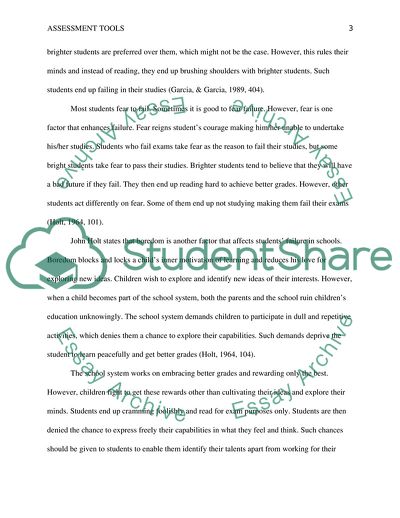Cite this document
(Assessment Tools at Classroom Level Article Example | Topics and Well Written Essays - 2250 words, n.d.)
Assessment Tools at Classroom Level Article Example | Topics and Well Written Essays - 2250 words. https://studentshare.org/education/1843234-final-project-completing-an-assessment
Assessment Tools at Classroom Level Article Example | Topics and Well Written Essays - 2250 words. https://studentshare.org/education/1843234-final-project-completing-an-assessment
(Assessment Tools at Classroom Level Article Example | Topics and Well Written Essays - 2250 Words)
Assessment Tools at Classroom Level Article Example | Topics and Well Written Essays - 2250 Words. https://studentshare.org/education/1843234-final-project-completing-an-assessment.
Assessment Tools at Classroom Level Article Example | Topics and Well Written Essays - 2250 Words. https://studentshare.org/education/1843234-final-project-completing-an-assessment.
“Assessment Tools at Classroom Level Article Example | Topics and Well Written Essays - 2250 Words”. https://studentshare.org/education/1843234-final-project-completing-an-assessment.


